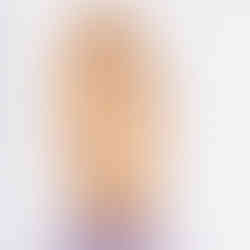Still life: Still life in tone using colour
- cndartstudio
- Oct 30, 2017
- 3 min read
The exercise was to set up a still life group, sketch it using coloured pencil or pastel, and work around the composition adding layers of colours on colour, building up tone, shadow and contrast.
I chose two main objects, a gold-painted shiny vase and a piece of broken building block, because of their interesting shapes and contrasting texture.
I then tried various supplementary objects, changing and rearranging them and making sketches until I was satisfied with the composition, which I set up on a small table, with a board behind as a backdrop.
The supplementary objects I settled on were a decorative egg to introduce some colour, and a marble turtle figurine to introduce something small for balance, the relationship between all four objects being that they are all made of processed stone.
The medium I used was soft pastel pencil and soft pastel stick, and the support I chose was a very textured pastel A3 paper. Having started however, I decided that I did not like the texture of the paper because the layers of colours were not blending as I wanted, so I changed my support to A2 smooth cartridge paper and started again.
To minimise the risk of the image becoming messy, I used a brush after each layer of colour to gently push in the pastel and remove the excess pastel, and then, when I was satisfied I had the tone I wanted, I added the final marks.
To also minimise the risk of the colours becoming contaminated with others and with the shadows as I worked on new areas, I cut tracing paper in the shape of completed objects and covered them.
I learned a lot about the use of coloured pastel pencil and stick to achieve tone, shadow and contrast, and my experiment using the brush to push in the pastel and remove the excess worked well, so I will definitely use the technique in future pastel work.
What aspects of each drawing were successful and what did you have problem with?
I especially liked working on the building block, although it took me a while and several sketches to work out how to do it.
It took me some time to get the colour and shine of the gold-painted vase, but feel that I did get it fairly accurately in the end. I also had problems with the light reflection on the porcelain egg and with lifting out the pastel, and looking back I should have tried to mask the shiny parts of the egg.
When I began the drawing I had the main room light on as well as a lamp on the right-hand side, which produced two sets of shadows. As I progressed however I decided to switch off the room light, leaving only the side lamp on, which emphasised the shadows on the table and on the board. I then tried to erase the shadows made from the room light but was not able to do so entirely, and there are still traces of room light shadow on the table which should not be there; to the right of the egg and to the right of the vase.
Did you manage to get a sense of depth in your drawings? What elements of the drawing and still life grouping help to create that sense?
I think the shadows on the table and on the board behind do give a sense of depth and position to the objects; spread out, not too close together.
How did using colour affect your drawing method?
I found using colours on the drawing easier than using just lines or monochrome marks, and was able to add shade and block in more quickly.














Comments